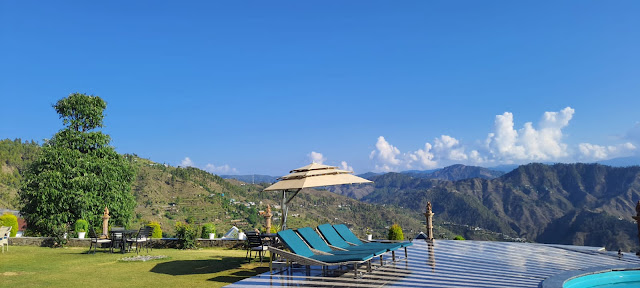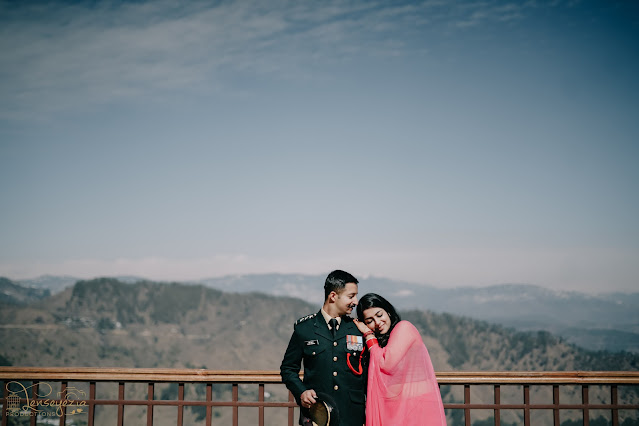Best Time To Visit Jim Corbett: A Comprehensive Guide
Planning a trip to Jim Corbett National Park? You've made an excellent choice! Nestled in the foothills of the majestic Himalayas, Jim Corbett is a haven for wildlife enthusiasts and nature lovers alike. Whether you're an avid photographer seeking that perfect shot or simply looking to reconnect with nature, this renowned national park Vatsyayana resort offers an unforgettable experience and is the best resort in Jim Corbett. In this comprehensive guide, we'll delve into the best time to visit Jim Corbett, ensuring you make the most of your trip and create lasting memories.
1. Exploring the Seasons
Jim Corbett National Park experiences three distinct seasons: summer, monsoon, and winter. Each season has its unique charm, and the best time to visit depends on your preferences and interests.
Summer (March to June): If you're a wildlife enthusiast eager to spot the elusive Bengal tiger, summer is an ideal time to visit Jim Corbett. The dry weather forces animals to venture out in search of water, increasing your chances of spotting them. However, the scorching heat can be intense, so remember to carry lightweight clothing, sunscreen, and plenty of water.
Monsoon (July to September): Monsoon transforms Jim Corbett National Park into a lush green paradise. The park rejuvenates with vibrant foliage, sparkling streams, and cascading waterfalls. While the monsoon season offers a unique and picturesque experience, it's worth noting that some parts of the park may be inaccessible due to heavy rainfall and roadblocks. If you don't mind occasional showers and want to witness the park's raw beauty, monsoon can be an excellent choice.
Winter (October to February): The winter months bring mild temperatures and pleasant weather to Jim Corbett. With the foliage turning a golden hue, the park exudes a serene and tranquil ambiance. Winter is an excellent time for birdwatchers as migratory birds flock to the park, adding to its natural diversity. Remember to carry some warm clothing, especially for early morning and evening safaris.
2. Considering the Zones
Jim Corbett National Park is divided into several zones, each offering a distinct wildlife experience. Understanding the characteristics of each zone can help you plan your Best Time To Visit Jim Corbett more effectively.
Dhikala Zone: Dhikala is the largest and most sought-after zone in Jim Corbett National Park. It offers a breathtaking view of the Ramganga Reservoir and provides ample opportunities for wildlife sightings. If you're looking for a comprehensive wildlife experience and don't mind staying overnight inside the park, Dhikala Zone should be on your itinerary.
Jhirna Zone: Known for its varied topography, Jhirna Zone is a popular choice for nature enthusiasts. Its open grasslands and mixed forests create a diverse habitat for a wide range of flora and fauna. The zone remains open throughout the year, making it an excellent option for those visiting during the monsoon or winter seasons.
Bijrani Zone: Bijrani Zone is famous for its dense Sal forests and picturesque landscapes. It offers a perfect blend of wildlife sightings and natural beauty. The zone is accessible during the summer and winter seasons and provides an ideal opportunity to spot the majestic Bengal tiger.
Durga Devi Zone: Situated in the northeastern part of the park, Durga Devi Zone is known for its hilly terrain and breathtaking views. This zone is renowned for its avian population, making it a paradise for birdwatchers. If you have a keen interest in birding, don't miss exploring this captivating zone.
3. Planning Your Safari
A safari in Jim Corbett National Park is an experience like no other. To make the most of your visit, here are some essential tips for planning your safari:
Booking in Advance: It is highly recommended to book your safari in advance, especially during the peak seasons. The demand for safaris can be high, and securing your spot beforehand ensures a seamless experience.
Choosing the Safari Mode: Jim Corbett offers various safari modes, including Jeep safaris, Canter safaris, and elephant safaris. Jeep safaris are the most popular choice as they offer flexibility and allow you to cover more ground. Canter safaris are suitable for larger groups, while elephant safaris provide a unique and up-close encounter with nature.
Timing Your Safaris: Morning and afternoon safaris are available in Jim Corbett National Park. Morning safaris provide an opportunity to witness the wilderness awakening as the animals start their day. Afternoon safaris offer a different ambiance with vibrant hues during sunset and the possibility of nocturnal animal sightings.
Professional Guides: Opting for a professional guide can significantly enhance your safari experience. Their expertise and knowledge of the park can help you spot wildlife and provide valuable insights into the flora and fauna of Jim Corbett.
4. Safety and Etiquette
While exploring the natural wonders of Jim Corbett National Park, it is crucial to prioritize safety and follow proper etiquette. Here are a few guidelines to ensure a responsible and enjoyable visit:
Respect Wildlife: Jim Corbett is a protected area, and it's vital to respect the wildlife and their natural habitat. Maintain a safe distance from animals, avoid feeding them, and refrain from any actions that may disturb or harm the wildlife.
Stay on Designated Paths: Stick to designated trails and paths while exploring the park. Venturing off the designated areas can be dangerous and may have a negative impact on the delicate ecosystem of the park.
Follow Park Regulations: Familiarize yourself with the rules and regulations set by the park authorities. These guidelines are in place to protect both visitors and the environment, ensuring a sustainable future for Jim Corbett National Park.
5. Accommodation Options
Jim Corbett offers a range of accommodation options to suit every preference and budget. Whether you prefer luxury resorts, eco-friendly lodges, or budget-friendly guesthouses, you'll find something that caters to your needs, while Vatsyayana resort is preferred first choice of many guests. as the resort is Inspired by the philosophies of the sage Vatsyayana, author of the Kamasutra, all suites are delicately balanced with luxury and repose.
Here are a few popular choices:
Dhikala Forest Lodge: For an immersive experience, Dhikala Forest Lodge is a fantastic choice. Located within the core area of the park, it offers breathtaking views and the chance to spot wildlife right from your doorstep.
Bijrani Forest Rest House: Situated in the picturesque Bijrani Zone, this rest house provides comfortable accommodation and easy access to wildlife-rich areas. The rustic charm combined with modern amenities makes it an excellent option for nature enthusiasts.
Luxury Resorts: Jim Corbett is home to several luxury resorts that offer world-class amenities, spa facilities, and stunning views. These resorts provide a perfect blend of comfort and wilderness, ensuring a memorable stay.
In Conclusion
With its diverse wildlife, stunning landscapes, and rich biodiversity, Jim Corbett National Park is truly a treasure trove for nature lovers. By considering the best time to visit, exploring the different zones, planning your safaris, and practicing responsible tourism, you can create an unforgettable experience in this natural paradise. So, pack your bags, embrace the beauty of Jim Corbett, and embark on a journey that will leave you with memories to last a lifetime.






Comments
Post a Comment